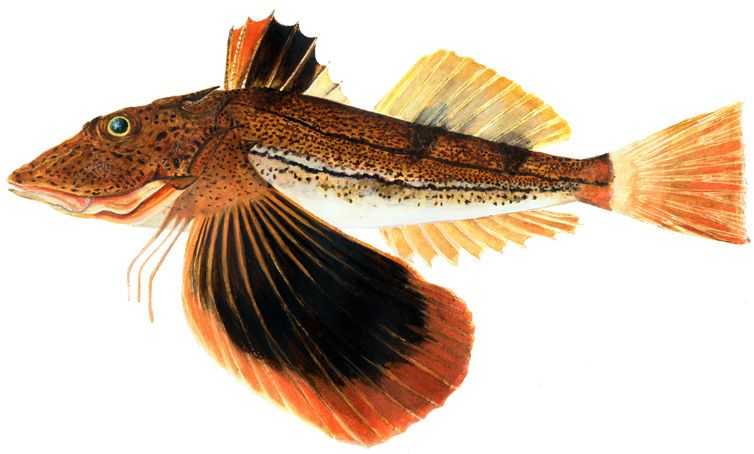Striped Searobin

Species Details
Prionotus Evolans
Triglidae
Scorpaeniformes
Inshore Estuaries
3 lbs.
12" - 18"
Striped Searobin (Prionotus evolans) Fish Description
A Striped Searobin is an inshore game fish known for its gray to a red-brown color with a white underbelly and distinct stripes on each side. It has large pectoral fins that look like wings or fingers that help them swim (or ‘walk’) through the ocean bed.
One of its noticeable features is its eyes. It has one of the most beautiful eyes resembling colors of gemstones encircled by gold. Its eyes' color can vary from dark blue to rich green, depending on how light strikes on it.
The Striped Searobin is often mistaken as a Northern Searobin, but you can distinguish it with its head, mouth, and fins. Compares to a Norther Searobin, the Striped Searobin’s head and mouth are larger while its pectoral fins are longer, and its tail is more square in shape.
But one fantastic feature of a Striped Searobin (and Searobins in general) is its ability to produce sounds. Varied sources documented Searobins to cluck, bark, and growl. Science hasn’t proven any behavioral context associated with these sounds just yet. Still, they observed that when a Searobin does its staccato call, it is more likely associated with its reproductive behavior.
Diet and Size
The Striped Searobin feeds on crustaceans (like clams, shrimps, and crabs) and small fishes.
The common size of a Striped Searobin is 12 inches and can grow up to 18 in. It can weigh as much as 3.5 lbs.
Interesting Facts About the Striped Searobin
- A Striped Searobin’s taste buds are located on its lips.
- The lower rays of its pectoral fins look like a human’s fingers and are used to “walk” at the bottom of the seabed. This is especially useful when searching for food.
- Aside from bait, a Striped Searobin can be used as pet food and fertilizer.
- A Striped Searobin produces a drumming noise when it vibrates the muscles near its swim bladder.
- The sharp spines of its dorsal fins and gill plates can inject mild poison. Something you might watch out for when handling this fish.
Habitat and Distribution
Striped Searobins are found from Nova Scotia to Northern Florida. Possibly around Little Bahama Bank, too.
They prefer to live on nearshores or sand bottoms of coastal and sandy bottoms of estuaries. They commonly swim around depths between 30 to 591 feet.
Rarely, Striped Searobins are also found in Cape Cod, Massachusetts, and are occasionally found over reefs.
Fishing Technique: How to Catch a Striped Searobin
If you intend to catch a Striped Searobin, you can use bottom fishing technique. Locate a nearby small river or inlet creeks, especially during early spring. Striped Searobins follows and falls for baits, but the best ones to use are bloodworms, clams, squid, or peeler crabs on bottom rigs. Cast your line at 45-degree angles to locate and baitfish easier, rather than casting it straight out to get a better chance of knowing where the fishes are patrolling.
Although it is often used as bait, a Striped Searobin is also a gamefish. Other anglers consider it ‘trash’ fish since they accidentally catch it when fishing for other species especially when they go deep sea fishing. Striped Searobins are often caught accidentally along with fluke. However, some anglers cook Searobins. It tastes good pan-fried, and some use it for fish stew.
The Striped Searobin is caught mainly for recreational purposes rather than commercial.







